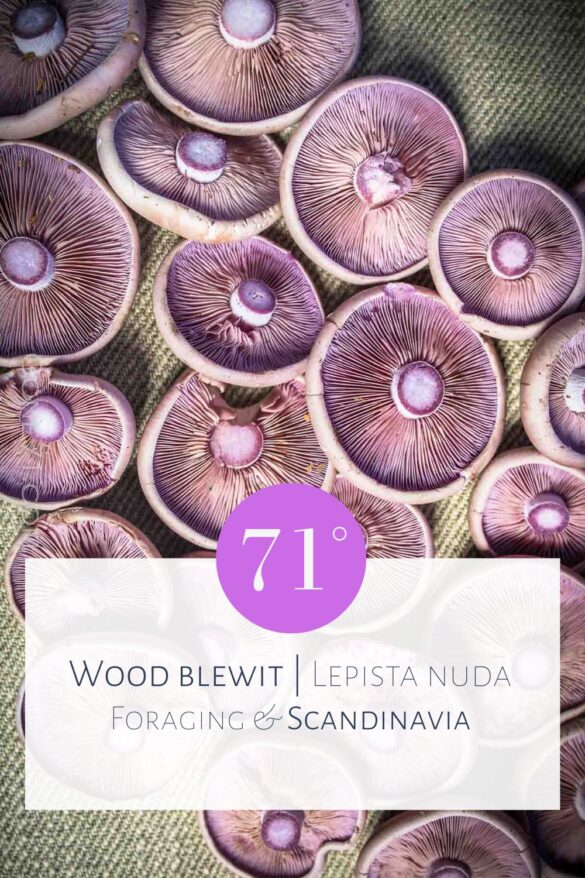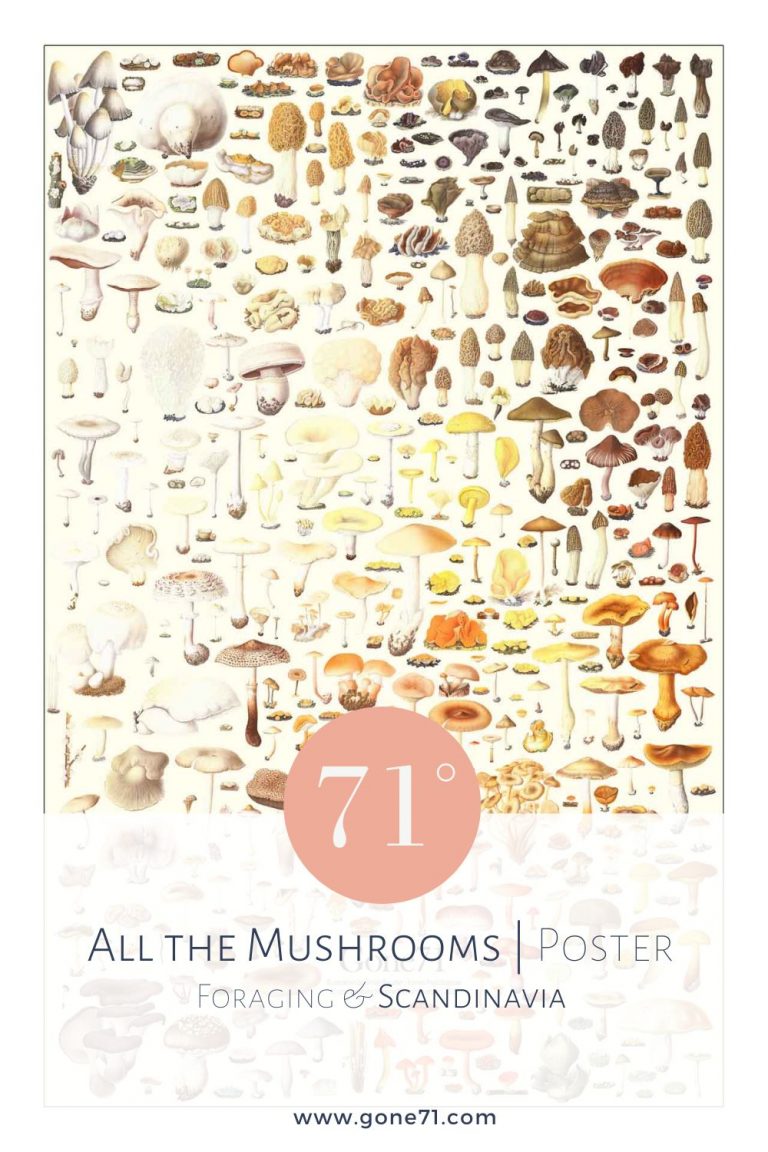swe.: Blåmusseron | nor.: Blå ridderhatt | fin.: Sinivalmuska | dt.: Violetter Rötelritterling, Violetter Röteltrichterling, Nackter Rötelritterling | sci. syn: Clitocybe nuda
The wood blewit is a beautiful mushroom that draws attention simply because of its remarkable color. It is also an excellent edible mushroom and can even be cultivated.
When the leaves fall in autumn and the porcini slowly begin to retreat, then it’s time for the colorful wood blewit (L. nuda). For me, this mushroom is always a signal that autumn has finally arrived and that a big change in the annual rhythm is imminent.
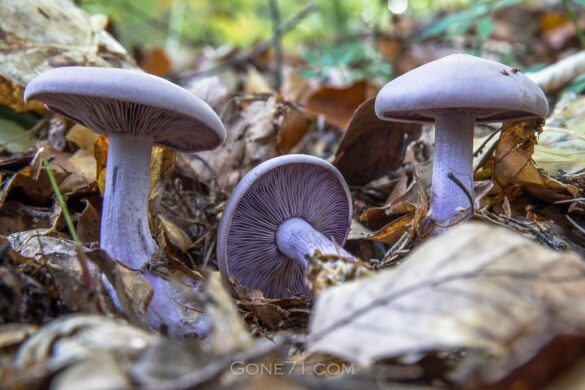
Different “species” of wood blewit
In fact, there are different types of wood blewit, but they are all edible. In addition to the classic purple wood blewit (L. nuda), there are also colored variants such as the lavender-colored wood blewit (L. galucocana), the purple-stemmed wood blewit (L. personata) or the gray wood blewit (L. panaeolus) . While the first two are similar in terms of culinary value and are also visually very similar, L. panaeolus should not be collected due to its similarity to the poisonous cloud funnel (C. nebularis) and its inferior taste. In mushroom books, the purple representatives are usually summarized as varieties of the L. nuda.
Only harvest mushrooms that you can identify with 100% certainty! The consequences can be life threatening if you are wrong. If you have the slightest doubt: do not eat the mushroom! This is not a mushroom guide! For correct identification consult a mushroom expert.
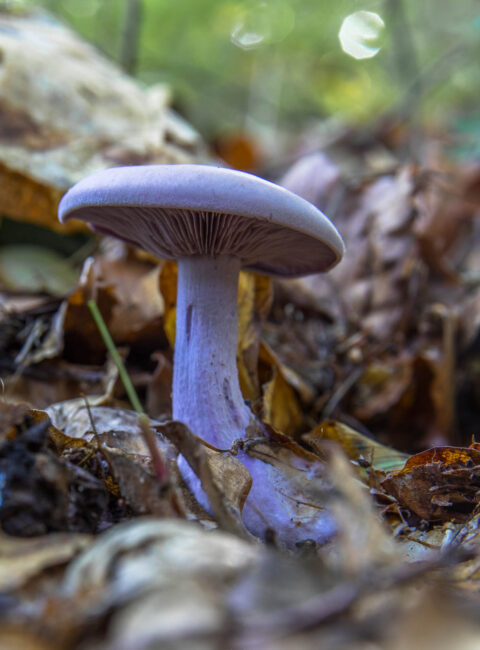
Appearance and habitat of the wood blewit
Wood blewits grow mainly in autumn (August – November) and are one of the mushrooms that can be found untill the end of the mushroom season (apart from winter mushrooms).
The caps can have a diameter of more than 10 cm and are usually grey-violet, violet-brown or grey-blue in colour. However, they are never fully brown or devoid of purple tones. Its smooth cap skin was also the eponymous characteristic (nuda), which should distinguish it from similar looking species (e.g. Cortinarius). The gills are very easy to remove and are also colored purple. The stalk is mostly purple in coloration like the cap. We usually find this mushroom in deciduous forests (beech), where it almost always occurs in (larger) groups. A wood blewit rarely comes alone!
cap diameter: 4-18cm
months: August – November
colours: violet, purple
habitat: beech, mixed forests
taste (raw):mild, nutty, fungal
consumption: cooked (poisonous raw)
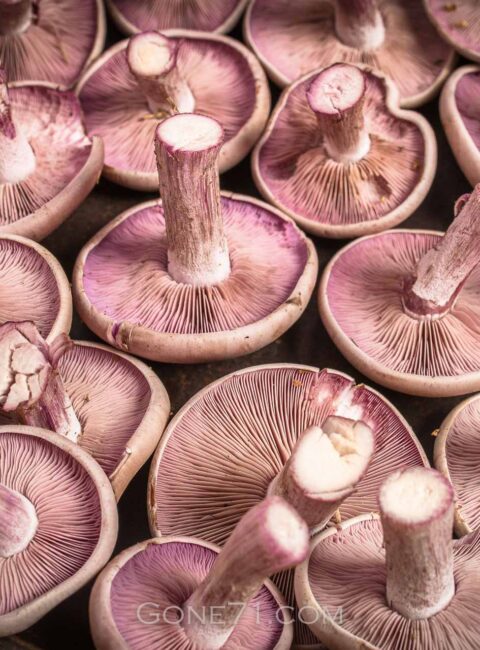
The wood blewit very often occur in large numbers and here in Central Europe they are often accompanied by the poisonous cloud funnel (Clitocybe nebularis), which needs the same soil and weather conditions. So if you find one, the other is often not far away either and it is worth taking a closer look.
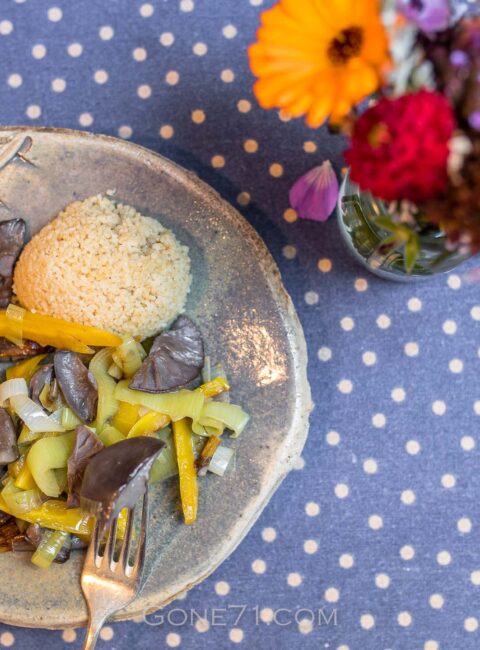
Look-alikes of the wood blewit
Unfortunately, apart from their characteristic appearance, as is so often the case, there are also some (poisonous) doubles here. Due to the risk of confusion with poisonous species, this mushroom should only be picked by people with experience.
We left this mushroom in the forest for many years because we weren’t confident enough in identifying it. Beeing “quite sure” is not enough! Now we love them though.
Confusing wood blewit with cortinarius
Some species from the Cortinarius family in particular, such as the gassy webcap (C. traganus), the goatcheese webcap (C. camphoratus), the violet webcap (C. violaceus) or C. alboviolaceus (ger.: Weißvioletter Dickfuß) can look confusingly similar to the wood blewit – and there are many more!
The genus Cortinarius includes over 500 different species and quite a few of them have a purple appearance in one form or another. Very many of them are poisonous or even deadly – only a few are edible.
Particular attention should be paid to brown spore powder residues that are characteristic of the representatives of the Cortinarius genus. If you find brown colour on the stem and/or the gills, you can basically rule out the wood blewit.
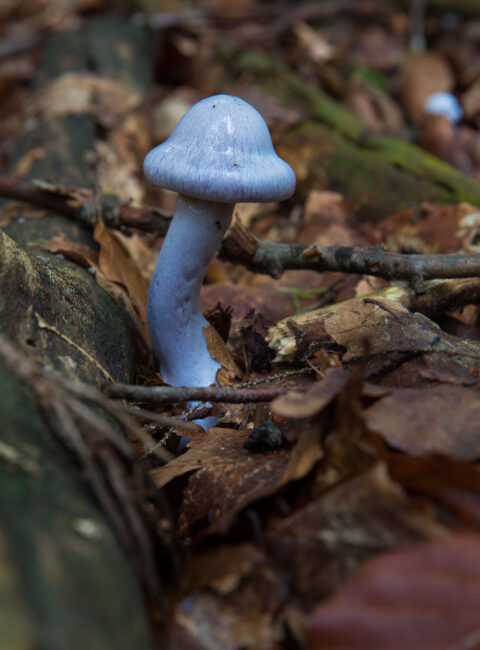
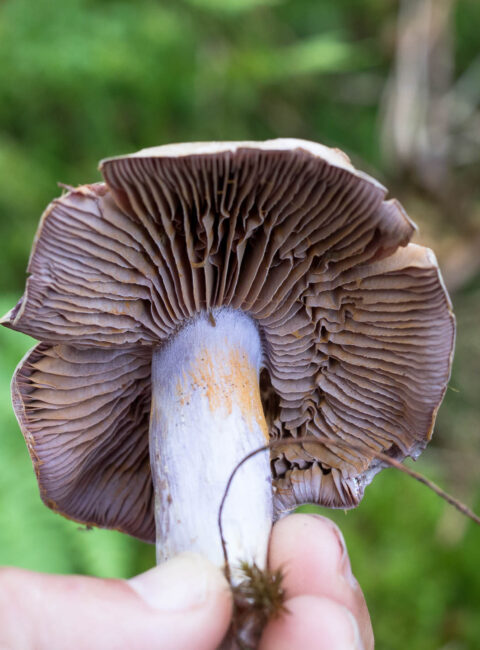
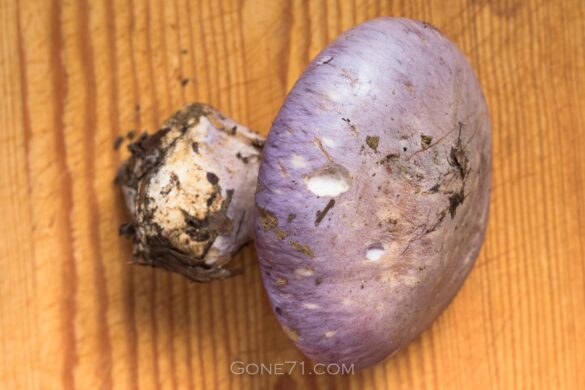
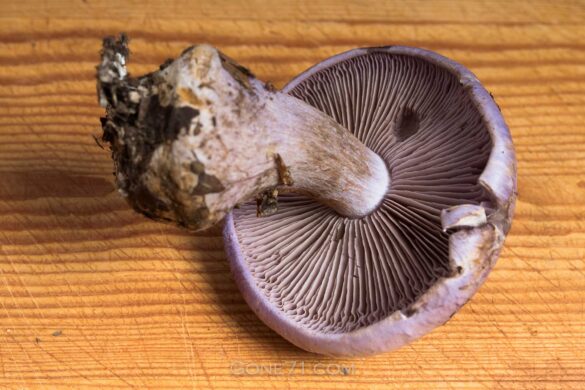
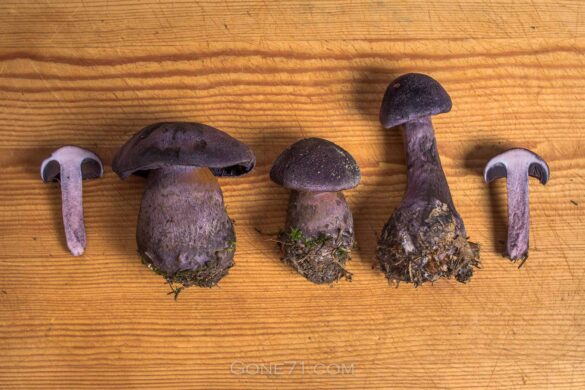
Confusing wood blewits with the amethyst deceiver
A less fatal confusion could also happen with the amethyst deceiver (Laccaria amethystina). In principle, this mushroom is considered a good edible mushroom, but it can be problematic because it accumulates arsenic acid. Some experts advise against consumption entirely. Although this fungus resembles L. nuda in color, it differs significantly in its appearance. It is usually much smaller, more delicate and thin-fleshed.
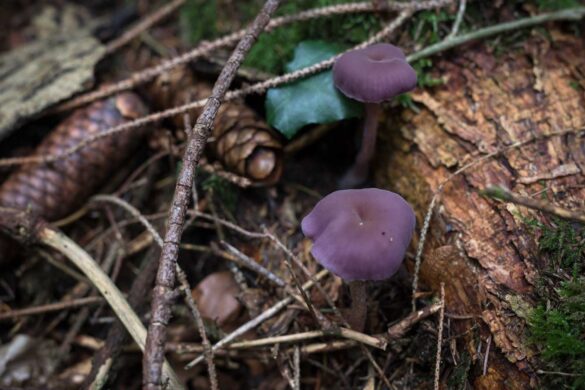
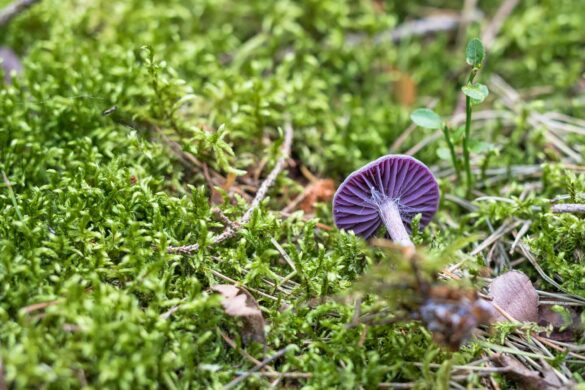
A list that we could continue…
Cultivation of wood blewit
Indications that you can grow the wood blewit yourself are relatively common in the mushroom literature and there have been practical attempts and scientific studies about this topic for decades. Although you can also find suppliers on the internet who sell mycelium and grow kits in various forms, the reports of successes are rather mixed and this mushroom has therefore not caught on commercially. We also couldn’t find any supplier who sells the fresh mushrooms except in France.
So if someone is motivated and wants to convert their compost heap into a mushroom farm, you will definitely find instructions on how to do it best. Who knows, maybe there will be a big breakthrough in cultivation by your invention 😉
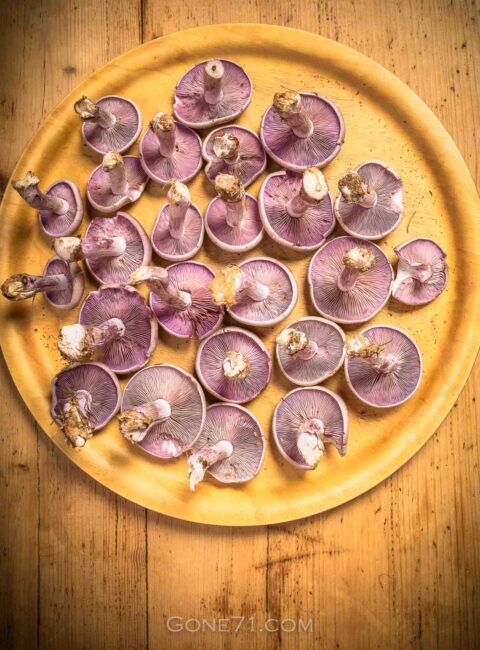
Is wood blewit poisonous?
Yes, if consumed raw! It is especially important to cook this mushroom well. Wood blewits are poisonous when consumed raw! They contain haemolysins – cell toxin that can destroy the cell walls of red blood cells. Wood blewits also contain hydrocyanic acid, which is also neutralized by cooking.
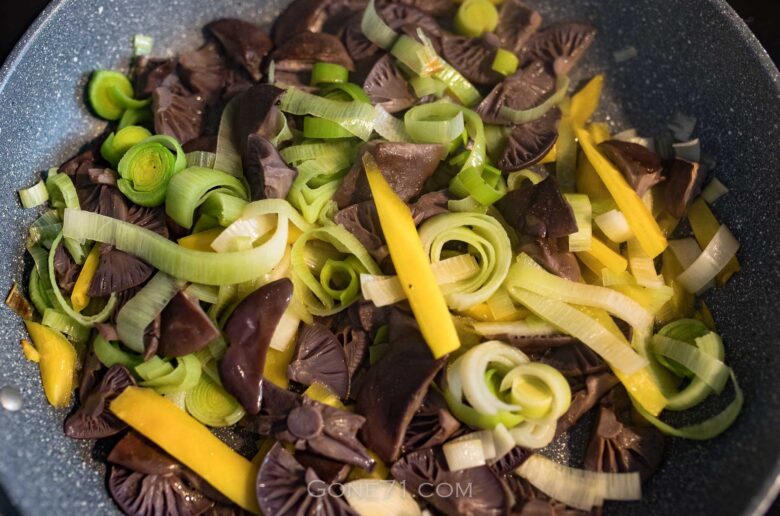
Wood blewit in the kitchen
The taste of the wood blewit is excellent but intense and not everyone likes that. It has a slightly sweet, very aromatic taste. We recommend dishes where the taste of the mushroom is in the center. Intense ingredients such as garlic, on the other hand, are less suitable.
Blewits are excellent in mushroom sauces, sautéed as a side dish or pickled in vinegar and olive oil. You can also dry blewits if you find them in abundance and do not want to pickle them.
When cooking, we only use the stalks of very young specimens but ususllay we remove them.
Our wood blewit recipe
In our recipe we cooked the blewits together with fresh leeks and carrots from our garden and served them with cuscus. The leek has a pleasant note and does not dominate the taste of the dish. In addition to the slightly sweet taste, the yellow carrots also add some color to the dish.
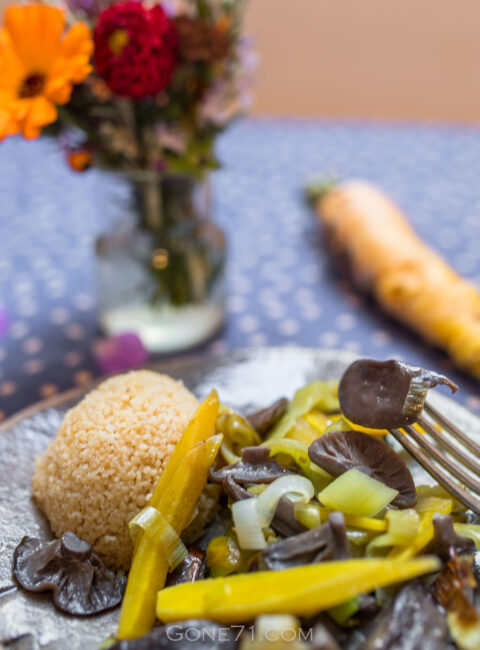

Wood blewit with homegrown vegetables and cuscus
Ingredients
- 300g wood blewit (L. nuda)
- half a leek
- 1 large carrot
- olive oil
- salt, pepper
- 200g cuscus
Instructions
- Remove the stems and clean the mushrooms.
- Depending on their size, cut the caps in half or into strips.
- Slice the leek.
- Also cut the carrots into thin stripes.
- We put everything together in a pan with some olive oil and salt.
- Cover and simmer over medium heat for a minimum of 15 to 20 minutes. (Make sure, the mushrooms are well done!)
- Stir well every few minutes.
- Prepare the cuscus at the same time. We use some vegetable broth for cooking the cuscus but of course you can adapt to your liking. Rice, polenta or pasta will work great as well.
- Season the vegetables and mushrooms to taste and serve together.
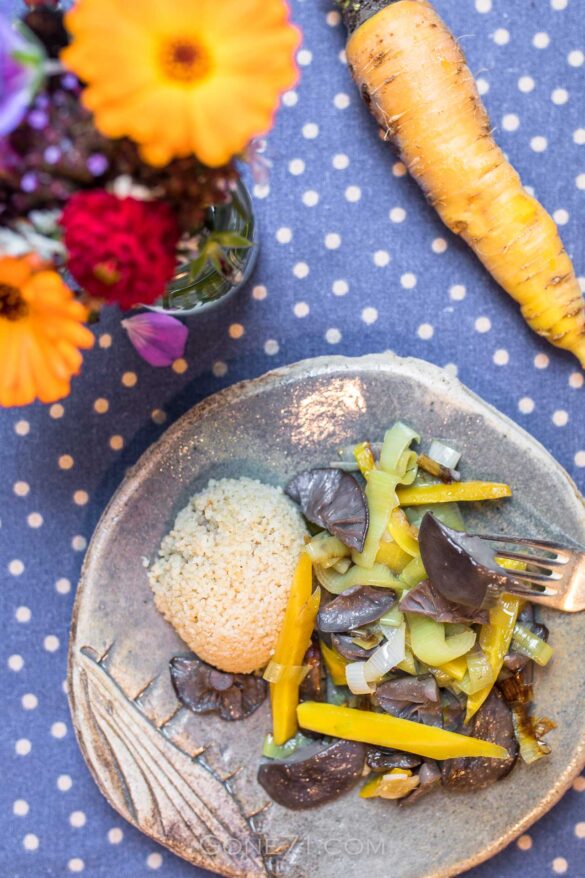
We have compiled this overview with the best of knowledge and belief, but do not claim to be complete and reserve the right to make errors.
Learn more about poisonous mushrooms and mushroom poisons here
↓↓↓
Find some inspiration in other mushroom recipes
↓↓↓
